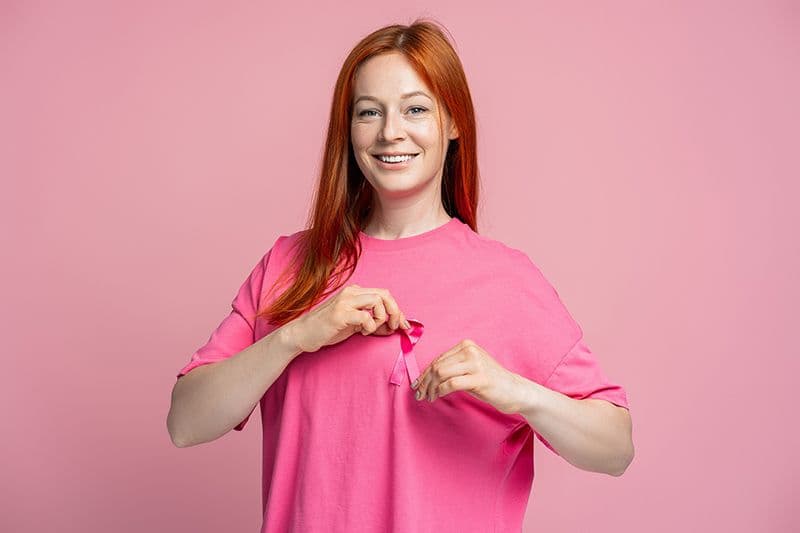After diagnosis: get informed and prepare to fight breast cancer!
Receiving a diagnosis of breast cancer turns your life upside down. However, medical knowledge and treatments have advanced enormously. Today, many women are living and rebuilding their lives after this disease.
A reliable and accurate diagnosis of your breast cancer is the first step in treatment. It is normal to have questions.
In this article, we will try to answer some of them. Feel free to consult our other articles for more information.
Breast cancer in figures
A diagnosis of "cancer" is undoubtedly a life-changing event that completely alters your daily routine. However, there are many good reasons to take an optimistic approach to your fight against cancer. Thanks to modern medicine, the chances of recovery have never been better than they are today.

A generally favourable prognosis
(1) Breast cancer is now associated with a generally favourable prognosis: nearly nine out of ten women are still alive five years after diagnosis. This rate can be explained in particular by early screening and treatments carried out in accordance with medical recommendations. It does not necessarily mean a cure, but it is an important indicator of the progression of the disease.

Breast cancer is the subject of extensive research
(1) New cases per year. Breast cancer is the subject of extensive research: it is the most common cancer among women worldwide. One third of all new cases of cancer in women are breast cancer (2). On average, one in eight women will develop breast cancer during her lifetime (3).

The risk of cancer depends on age.
The median age at diagnosis of breast cancer. The risk of cancer depends on age: younger women are less likely to develop the disease. The risk increases from the age of 40, and especially from the age of 50. The risk decreases after the age of 70. (5) However, 80% of breast cancers develop after the age of 50. (4)
In 2015, it was estimated that in mainland France, approximately 15.1% of breast cancers in women over the age of 30 were attributable to alcohol consumption and 4.4% to smoking. According to the same study, 10.6% of breast cancers in post-menopausal women were attributable to being overweight or obese.5
Basic facts about breast cancer: how and where does breast cancer come from?
All cancers are caused by changes in cells. Genes are the instructions and guidelines for building the body. They are stored in every cell in the form of DNA. When altered, these genes can lead to abnormal cell proliferation, which causes cancer.
Understanding breast anatomy: glands and lymphatic vessels
The female breast consists mainly of a gland that produces milk . This gland is organised into small sacs called lobules, connected to each other by ducts that carry milk to the nipple.6
The breast also consists of:
- nerves (for sensitivity),
- blood vessels (which carry blood),
- fat,
- and lymphatic vessels, which are part of the body's defence system.
These lymphatic vessels play an important role in breast cancer. If cancer cells migrate, they can use these vessels to travel throughout the body. They often first reach the lymph nodes located under the arm (armpit), those in the chest , or under the collarbone6 .
This is why, when diagnosing breast cancer, doctors also check these areas.
Carcinoma in situ or invasive tumour: what is the difference?
Breast cancer often starts in the cells that line the inside of the breast ducts. Sometimes it also starts in the lobules, where milk is produced.7
When cancer cells remain localised in this area without invading the surrounding tissue, it is referred to as carcinoma in situ. The tumour is still "in place". At this stage, surgery alone (such as a mastectomy) may be sufficient to remove all abnormal cells.9 If the breast is preserved, radiotherapy will be recommended to reduce the risk of recurrence.8
However, if the cells have crossed the natural barrier and begun to grow into neighbouring tissue (fat, connective tissue), this is referred to as an invasive tumour. This means that the cancer has spread and surgery must often be combined with other treatments (such as chemotherapy or radiotherapy) 7,8.
- https://www.santepubliquefrance.fr/maladies-et-traumatismes/cancers/cancer-du-sein
- Overview of cancers in France, 2024 edition, National Cancer Institute
- Breast tumours, Chapter 22, Item 312, National College of Cancer Teachers, Cancerology, 3rd updated edition, R2C, Med-line edition
- National Cancer Institute. (n.d.). The essentials. https://www.cancer.fr/personnes-malades/les-cancers/sein/comprendre-les-cancers-du-sein/l-essentiel
- Overview of cancer in France 2025, 20th anniversary special edition, Cancer.fr
- [ Circ 2018 ] .
- Understanding breast cancer | ameli.fr | Insured
- Breast cancer
- The different types of breast cancer | Léon Bérard Centre
